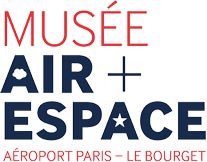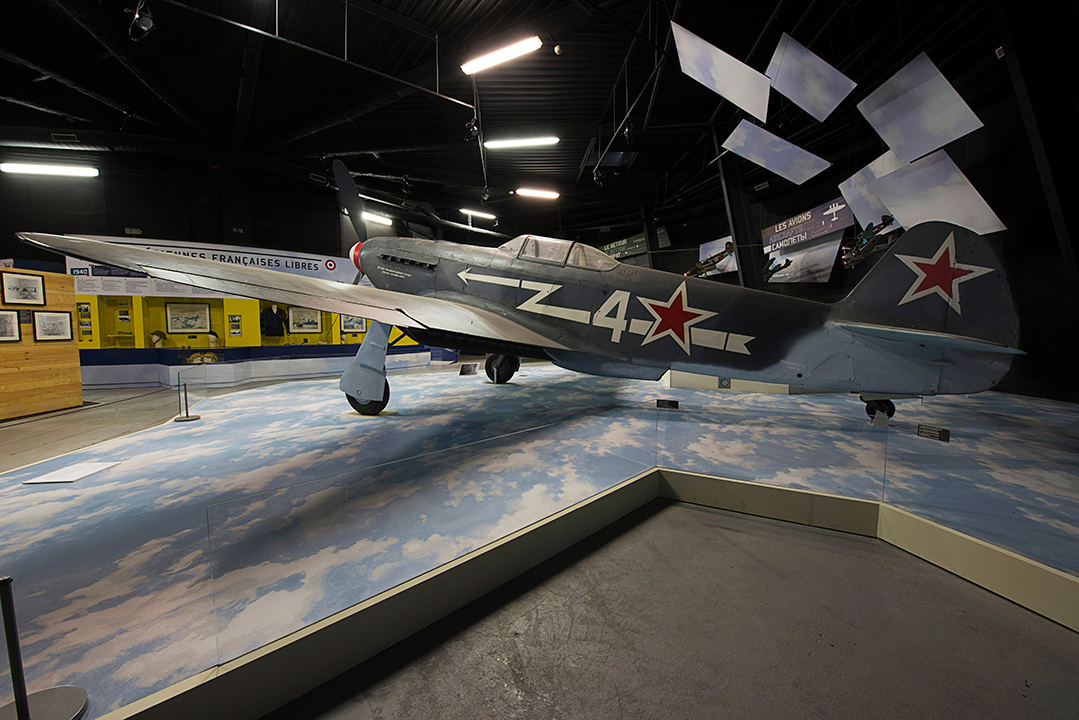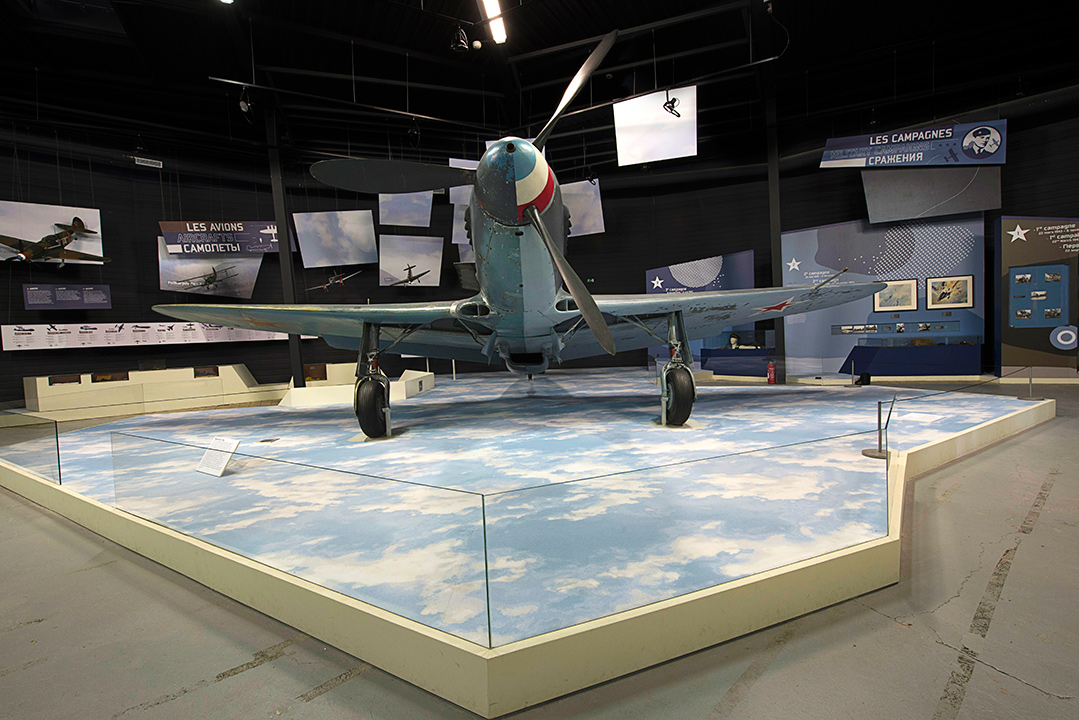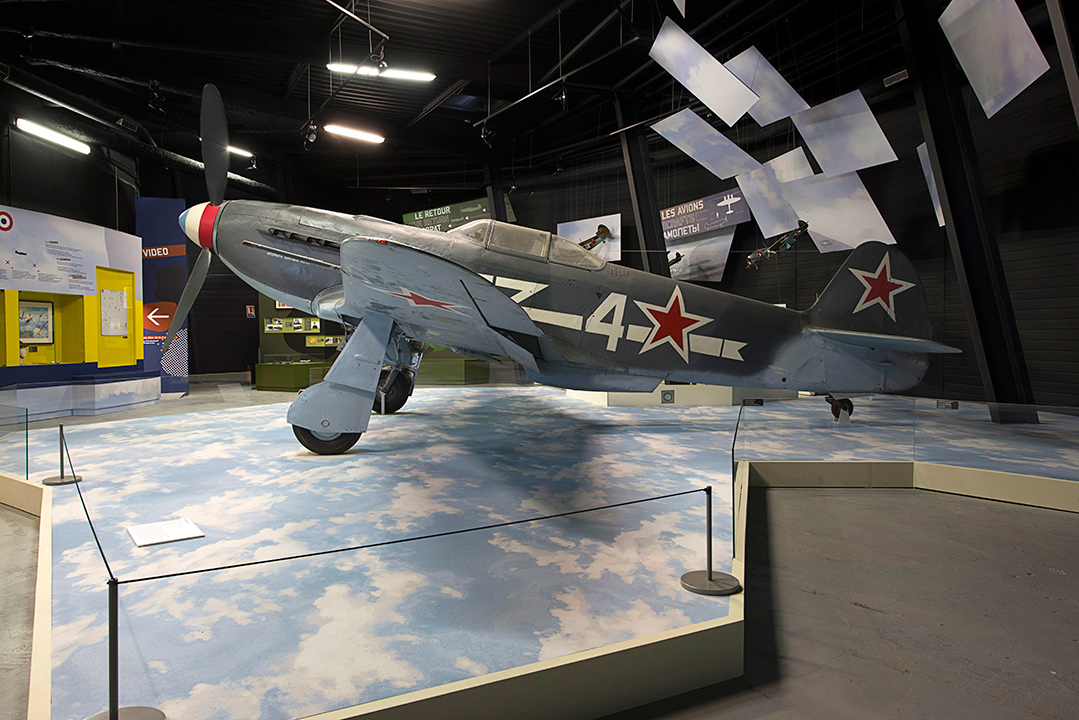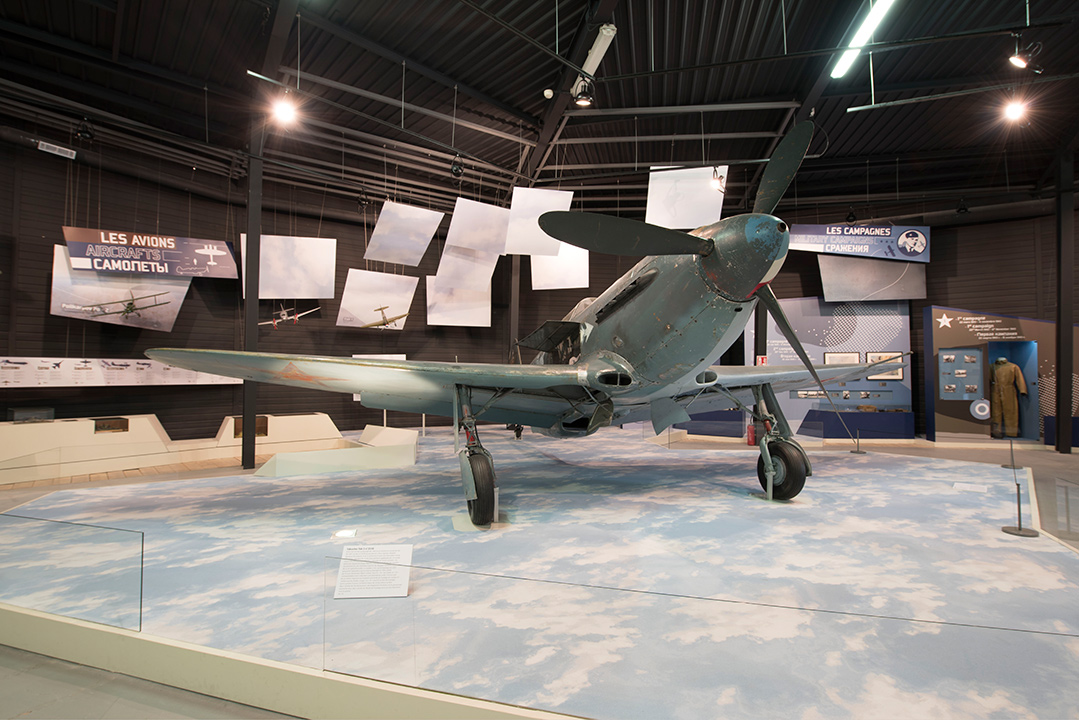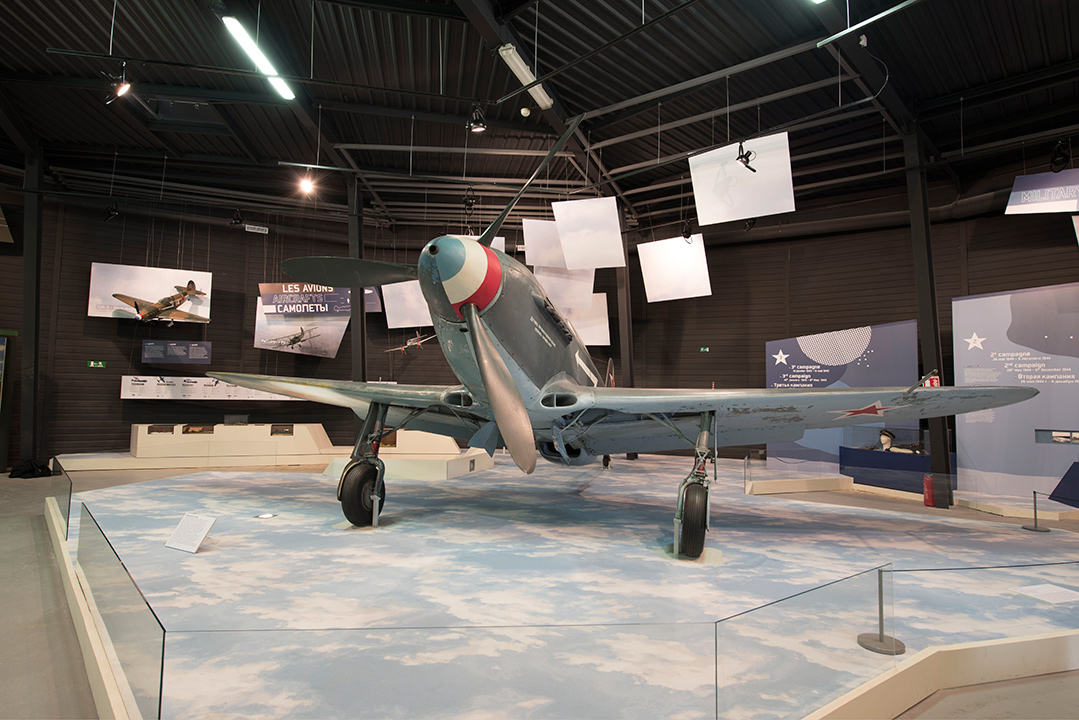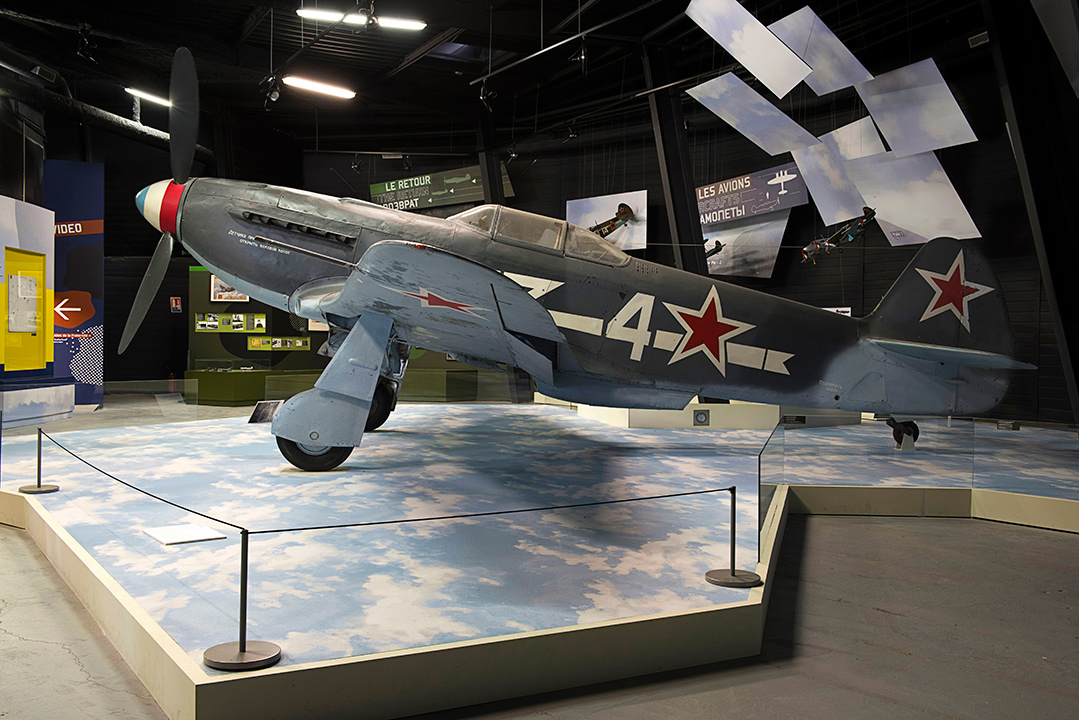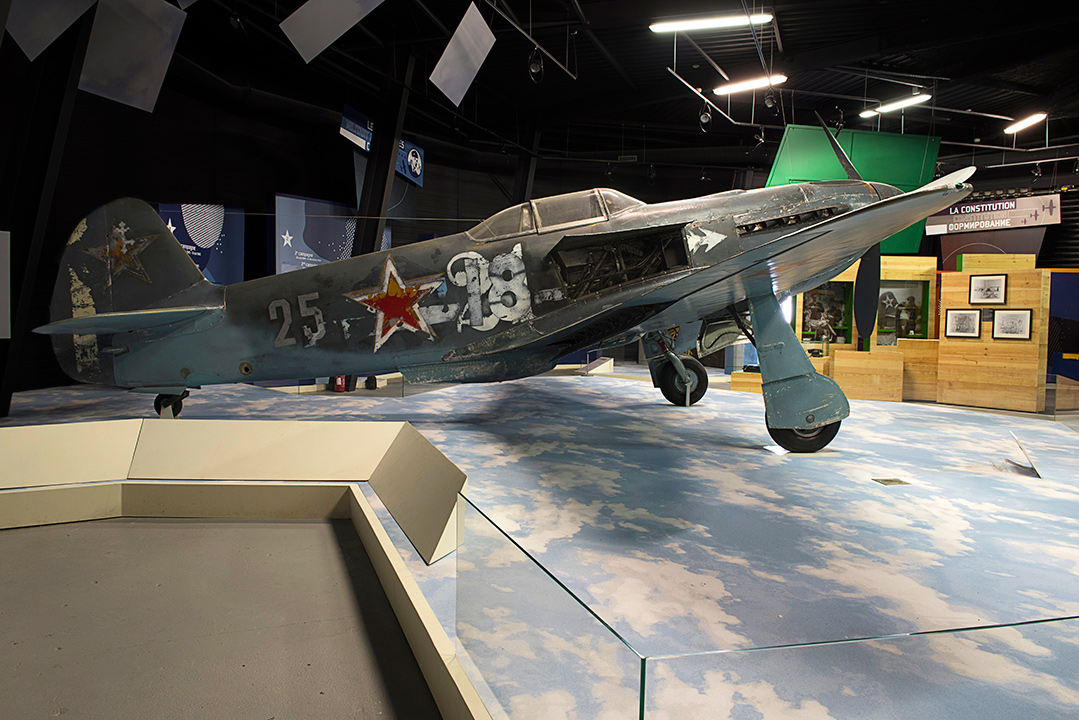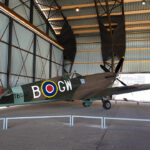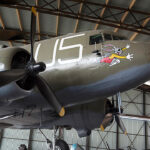The Yak-3 was the most efficient version of the series of Yakovlev fighter jets, with 34,000 of them coming off the assembly lines during the Great Patriotic War. The final development in the family, the first plane in the series flew on 8 March 1944 and went into operation the following summer. At the time it was the lightest model and the easiest to handle of all fighter jets in all aspects.
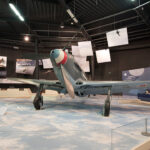
Yakovlev Yak-3
The Yakovlev Yak-3 is equipped with a Klimov VK-105 A 1,650 hp engine.
- Envergure : 9.2 m
- Longueur : 8.55 m
- Hauteur : 2.42 m
- Surface alaire : 14.85 m²
- Masse en charge : 2985 kg
- Vitesse maximale : 720 km/h
- Plafond pratique : 10880 m
- Distance franchissable : 1060 km
- Armement : 1 x 20 mm cannon – twin 12.7 mm machine guns
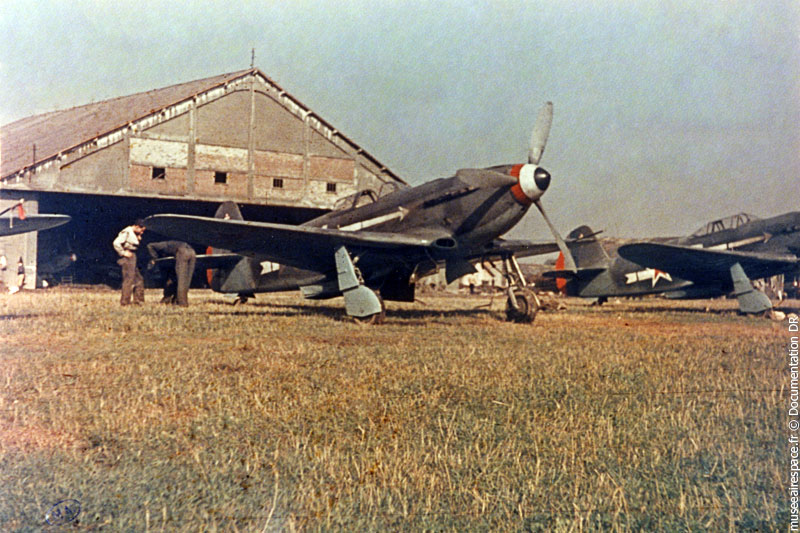
Normandy-Niemen
It achieved fast and brilliant results, its only weakness being the poor resistance of its wooden wings.
The Normandy-Niemen Fighter Squadron didn’t start to use its Yak-3 until December 1944, but its pilots scored 95 single or shared victories in five months. The Squadron, which had fought since 1942 alongside the Soviets, returned on 20 June 1945. On Stalin’s orders and as a token of gratitude, around forty of them were personally gifted to the pilots, to the 29 senior pilots and to most of the 13 new ones.
The model at the museum
The aircraft currently on display with the no. 4 of Lt. Robert Marchi (4 victories and 2 shared on Yak-3) is in fact an aircraft taken from another Soviet regiment to make up the numbers. Manufacturer number 2530, it was then coded 25. It arrived at Le Bourget on 20 June 1945 with the no. 18. Donated to the Museum in 1947, it was repainted along with the no. 4 in 1976.
The Yakovlev Yak-3 is the aircraft used by the French “Normandy-Niemen” regiment on the eastern front. In planning for an exhibition devoted to Normandy-Niemen, the Yak-3 was removed from the World War II Hall. It has joined the museum’s reserves and will be on display in the new staging, in a dedicated space.
